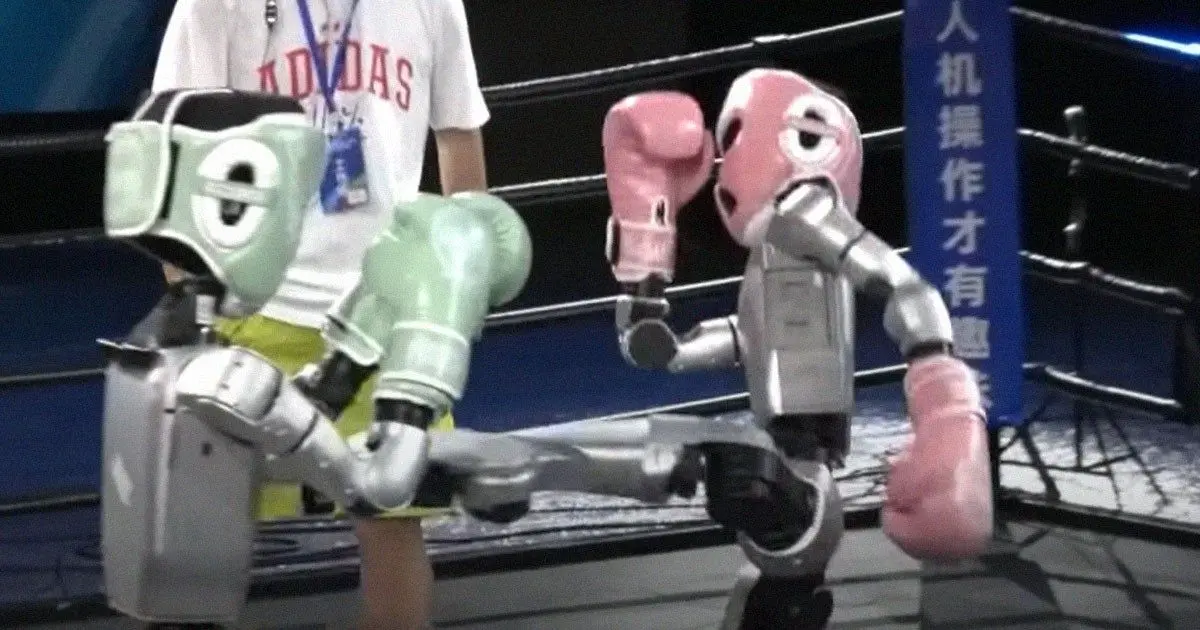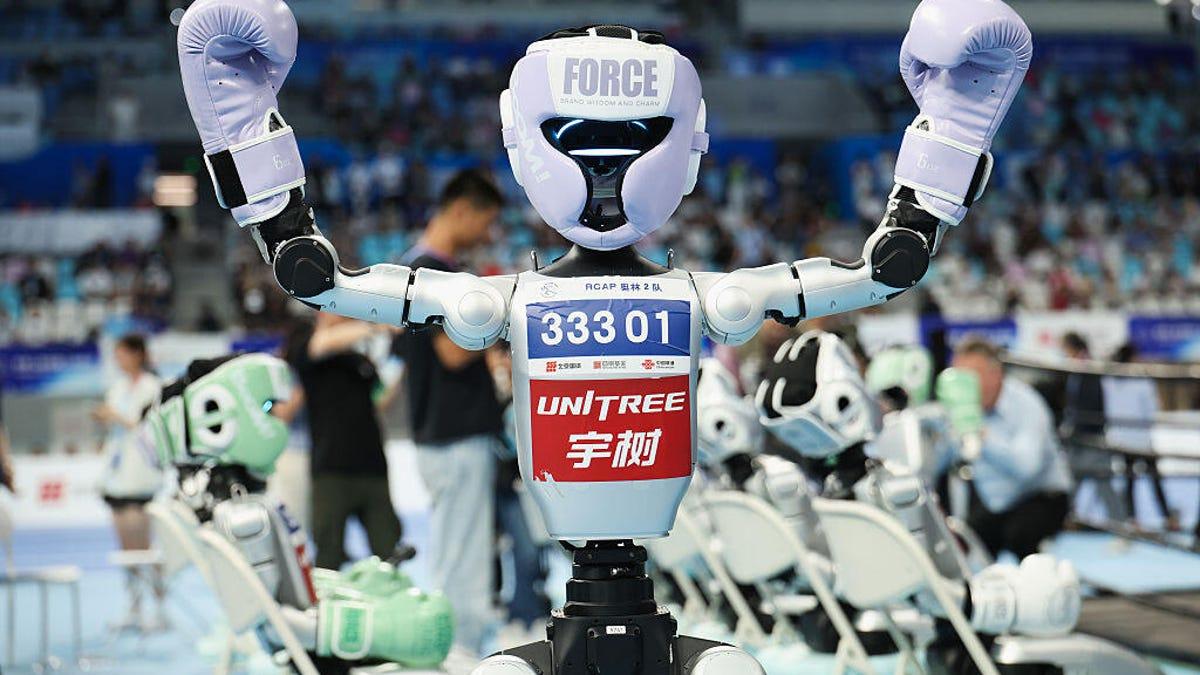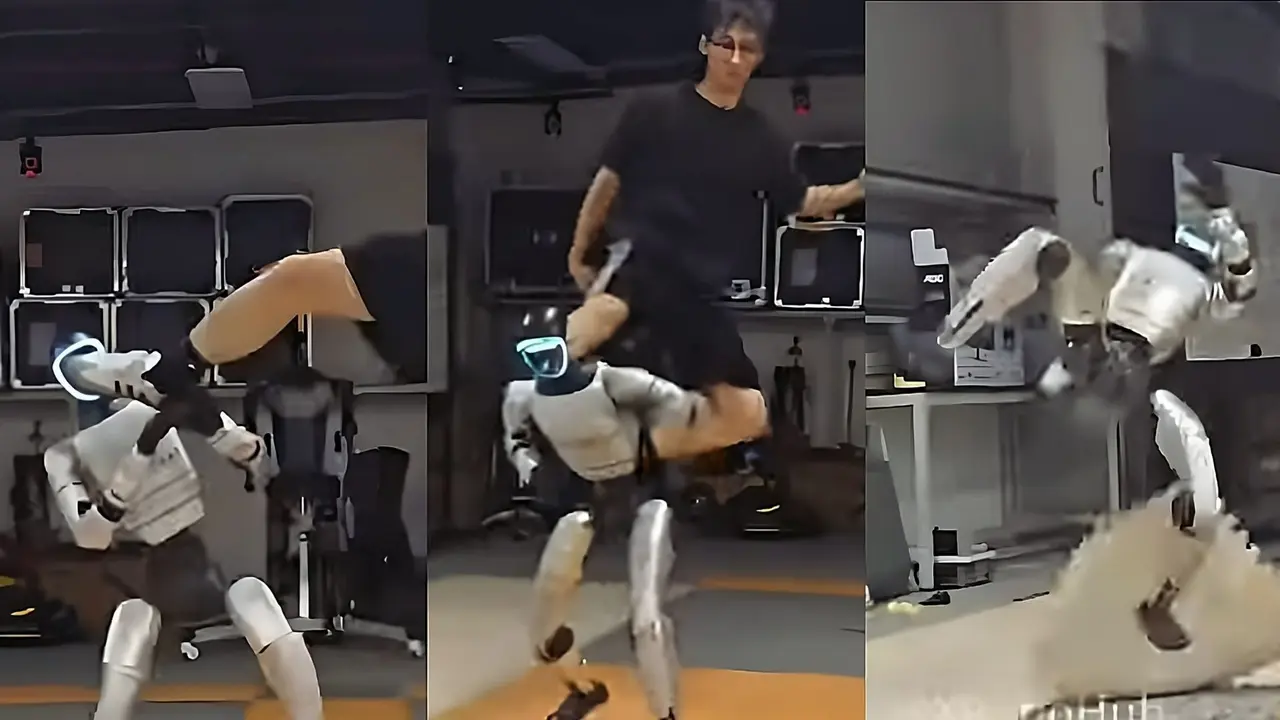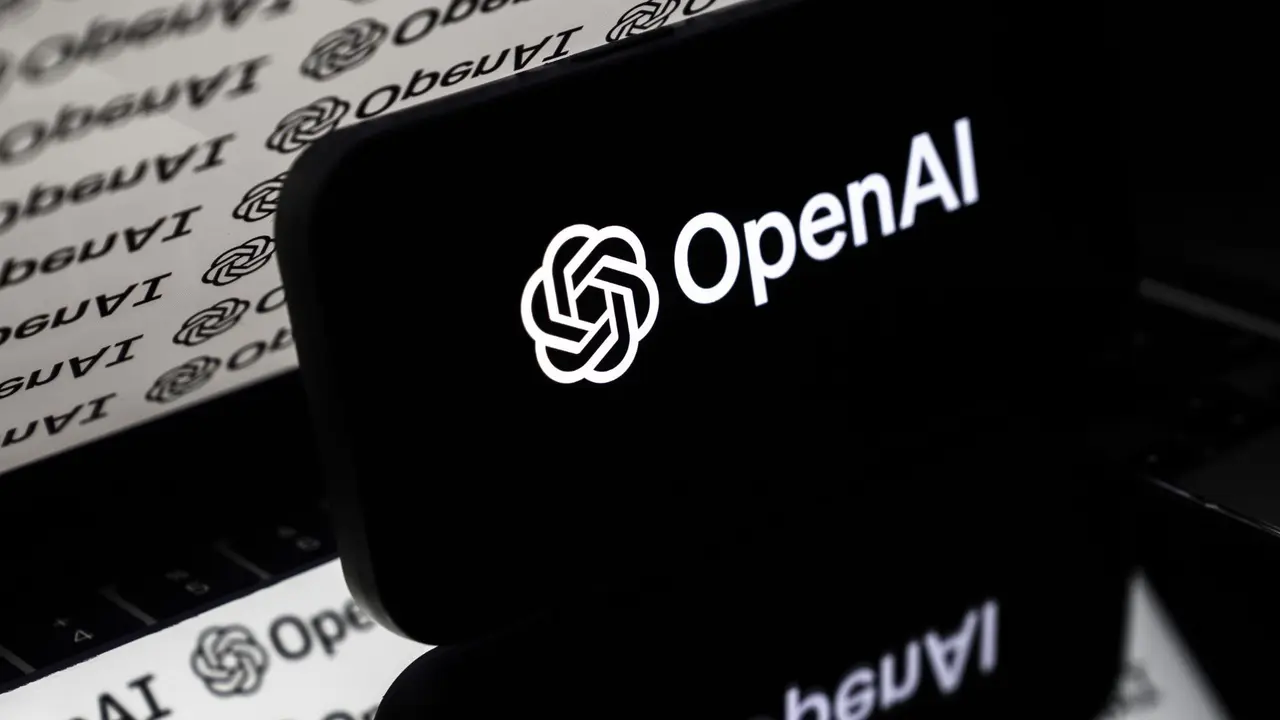World's First Humanoid Robot Kickboxing Tournament Showcases AI and Robotics Advancements
9 Sources
9 Sources
[1]
Highlights From World's First Humanoid Robot Kickboxing Tournament
China recently hosted a kickboxing tournament for humanoid robots and we've compiled all the highlights in one place. Six Unitree G1 humanoid robots and the humans operating them fought for the top spot in what was billed as "the world's first combat competition exclusively featuring humanoid robots." Each "fighter" was a Unitree G1 EDU model, the most advanced robot in Unitree's G1 lineup, armed with special combat training including straight punches, hooks, kicks, and knees. These robots can be controlled by voice command, motion-sensing or remote control. Unitree says each control method has its pros and cons. Remote controls are being used to control the robots in this competition because they have lower latency than voice commands and are easier to learn. I got behind the controls of Unitree's G1 robot at CES and the company's Go2 Pro robot at CNET HQ. I found the remote controls very intuitive and similar in feel to the video game controllers I grew up with. After four matches of punishing robot-on-robot carnage, including at least one spectacular knockout, the robot in black, nicknamed "AI Strategist," took home the top prize. Check out the video in this article to see all the gnarliest highlights.
[2]
China hosts world's first mechanical mixed martial arts...
Let's get ready to rumble: In a clash where silicon meets sinew, China just hosted the world's first-ever humanoid robot kickboxing tournament - and no, it wasn't a sci-fi movie set. The China Media Group World Robot Competition - Mecha Fighting Series kicked off on May 25 in Hangzhou, Zhejiang province, with humanoid bots from Unitree Robotics stepping into the ring for some MMMA. It was an event reminiscent of the old Robot Wars show in the late 90s but slightly less violent. Four Unitree G1 robots, each roughly the size and weight of a small adult (35 kilograms and 132 centimeters tall), battled it out under the watchful eyes of their human controllers and a referee. Asia Times notes that the matches aired on state-run Chinese Central Television, bringing mechanical martial arts to the masses. Each fight unfolded in two parts: a skill showcase followed by three two-minute rounds of combat. The bots could score points by landing punches (one point) and kicks (three points) to the head or body. However, falling was costly - five points lost for a tumble and an instant 10-point deduction if a robot couldn't get back up within eight seconds, ending the round abruptly. It's something you really have to see to appreciate (video below). I was skeptical at first, but it turned out more impressive - and more unintentionally hilarious - than expected. The robots threw punches and kicks with smooth, almost graceful motion, though nothing that would worry a human opponent. Strikes landed more like nudges than blows, exploiting the opponent's balance rather than using brute force. Even so, most managed to get back on their feet quickly after falling - some with almost artistic flair. Teaching a robot to fight like a human isn't just a matter of wiring up some limbs and letting it loose. "It is not easy to teach robots different movements," Unitree Director Wang Qixin told Chinese Central Television. "We used artificial intelligence (AI) technology to train them. First, we captured the data of the movements of some professional kickboxing athletes, and then the robots learn these movements in a virtual world." Experts see the competition as a quantum leap forward for China's humanoid robotics. Li Gaofeng of Zhejiang University said that just six months ago, such movements were barely imaginable. Combat demands full-body coordination and split-second reactions - pushing algorithms, electronics, and mechanical parts to their limits. Some commentators say Unitree's bots have already surpassed those of Boston Dynamics, best known for its Atlas robot. Others argue that BD's precision still outmatches Unitree's enthusiasm. Atlas can pull off cartwheels; Unitree's G1 bots are learning to kickbox. It's a rivalry worthy of a heavyweight title itself. Put this guy in the ring and it'll win every fight. While the exhibition was entertaining and impressive, not everything goes smoothly at Unitree. Earlier this month, a security camera captured a Unitree H1 robot flailing wildly during a factory test, sparking fresh safety concerns. No one was hurt, but it serves as a reminder that humanoid robots are still very much a work in progress - and a little unpredictable. Come to think of it, the boxing match might have been even more entertaining if the bots had gone berserk. Looking ahead, Shenzhen-based EngineAI plans a bigger, full-sized humanoid robot combat match this December, promising even more action and AI innovation. Meanwhile, Unitree's kickboxing bots are gearing up to bring their moves into homes within the next few years - hopefully without throwing any wild tantrums. Permalink to story:
[3]
China: How AI dominated world's first humanoid robot boxing match
The event, part of the China Media Group's World Robot Contest: Mech Combat Arena Competition, featured high-intensity matchups where humanoid robots mimicked human fighting techniques with remarkable precision. Developed by Unitree Robotics, the competitors showcased advanced combat skills, battery endurance, and full-body coordination. "AI Strategist" outperformed rivals in the live-streamed showdown, delivering powerful punches and strategic moves to claim the inaugural title, reports a Chinese media outlet. The world's first humanoid robot fighting competition in Hangzhou consisted of each combat session consisting of three rounds lasting two minutes. Points were awarded based on strikes -- 1 point for arm hits, 3 points for leg strikes, and penalties for knockdowns or failure to recover within eight seconds, reports CGTN. In the opening match, "AI Strategist," operated by Lu Xin, faced "Silk Artisan," piloted by Jiao Tianqi. "Silk Artisan" began strong with agile leg attacks and side kicks, gaining early points. However, the tide turned in the third round when "AI Strategist" landed a powerful knee strike, knocking down its opponent and securing the win.
[4]
Wild Video Shows Robots Fighting in Kickboxing Match
Two humanoid robots entered the ring to trade punches and kicks at an event in Hangzhou, China, over the weekend. Footage shows the two skinny bipedal units jabbing, kneeing, and swiping at each other, leading to plenty of stumbling and a faceplant. However, the fallen competitor got back on its feet in seconds, extending the scuffle for a nail-biting finale. However, the robots weren't acting autonomously just yet, as they were being remotely controlled by human operator teams. The skirmish was part of the China Media Group World Robot Competition, as the BBC reports, featuring robots built by Chinese firm Unitree Robotics. It's a surprisingly entertaining new take on a sport, offering us a glimpse of what a future of sporting events featuring highly dexterous androids could one day look like -- almost like an agility-oriented riff on the 2011 robot boxing epic "Real Steel." Per state-run Chinese tabloid The Global Times, the competition "marks a historic moment as it is the world's first combat sports event centered around humanoid robots, signaling the gradual integration of artificial intelligence (AI) into combat sports." According to Chinese state-owned news broadcaster CGTN, a humanoid robot dubbed "AI Strategist" won over "Silk Artisan" after dealing a "decisive knee blow, knocking down the opponent and securing victory." During a second round, "Armored Mulan" was KO'd by "Energy Guardian" and accidentally stumbled during a third round, rounding out its disappointing performance. The bout, and similar demos, show that Unitree has made immense progress in giving its humanoid robots a striking degree of dexterity. In a video that went viral in February, a G1 humanoid robot can be seen pulling some gnarly kung fu moves. The company, among other Chinese competitors, is already mass-producing both bipedal and quadrupedal robots for relatively low prices, especially compared to the likes of Boston Dynamics' Spot Mini.
[5]
First Humanoid Boxing Match Takes Place in China -- And It's Pretty Cool - Decrypt
The event highlighted the growing intersection of advanced robotics, AI, and real-world physical competition. Robots are fighting each other now -- and they're pretty good at it. On Monday, the Chinese Media Group (CMG) World Robot Competition -- Mecha Fighting Series took place in what was branded as the "first humanoid boxing match," although the event was closer to a mixed martial arts competition. Four robots faced off in a boxing ring controlled by ringside humans, in a surprisingly enjoyable display of cyborg athleticism. Created by manufacturer Unitree, the competing robots were able to throw hooks, jabs, uppercuts, a knee, a range of kicks, and were agile enough to get up off the ground. "I believe this is a moment where history shakes hands with the future. We are witnessing history," the host of the event said, according to the English translator on CGTN. After a quick warm-up round, the robot named Pink, after its headgear, fought against Black, named for the same reason. Black was first to be knocked down, simply by throwing a leg kick and falling over -- Pink cheekily tapped its butt in celebration -- however, Black got up within a matter of seconds. In round three, Black scored a major knockdown on Pink following a perfectly executed front kick. Soon after, Pink was knocked down for a second time, and Black fell on top of the robot. Black sprang back up, but Pink failed to do the same, leading to Black taking home the victory. "His opponent threw his whole body weight on him," a commentator said, explaining why Pink was unable to get back up. Weirdly, Pink was announced the winner on the broadcast despite the knockout. The result was later rectified, and Black progressed to the final. Unitree is a Chinese-based robotics company known as one of the pioneers of the advanced robotics movement. It was first known for its robotic dogs but has since established itself as the creator of top-quality humanoid robots. In January, popular AI agent ElizaOS announced the Eliza Wakes Up project that will see the agent get a robot body. Its creators told Decrypt at the time that it will be using the Unitree H1 as the base for Eliza. Eliza's Unitree robot is explicitly not to be used for sex. This detail was stressed due to the announcement coming a week after a horny developer strapped the AI agent to a sex toy, allowing for erotic conversation with Eliza while using the toy In February, Unitree started to showcase videos of its G1 model performing martial arts moves -- including a 720 Kung Fu spin kick. By April, it had videos of the robot fighting humans and recovering from being knocked down. Now, in late May, it appears it is the G1 model that is fighting in a robot-only martial arts competition. After qualifying for the final by beating Pink, the Black robot won via decision against Green to win the entire event. With this, Black and its human controller received an invitation to the final of the CMG World Robot Competition. Online spectators compared the first event of the series to the 2011 movie Real Steel, which saw large humanoid robots fight it out in the ring controlled by human operators.
[6]
China has held the world's first robot martial arts tournament and I can't think of a single thing that could possibly go wrong
We can surely all agree there's absolutely nothing to be concerned about when it comes to robots and AI. So, it makes perfect sense to hold what's claimed to be the world's first martial arts tournament for robots. It's all completely harmless fun and games, nothing that remotely brings to mind Cyberdyne Systems Model 101 gone rogue. Nope. Anyway, the China Media Group World Robot Competition Mecha Fighting Series reportedly kicked off -- literally -- on May 25 in Hangzhou, China. According to Asia Times, the tournament included Unitree Robotics G1 robots weighing in at 35 kilograms and 132 centimeters tall. The G1 is actually available to buy from $16,000, just in case you want your own killing machine, sorry friendly household bot, and it comes with 3D LIDAR and two-hour battery life. Inevitably, the robots run AI models trained on data capture of the movements of kickboxers for the tournament, but it's not clear if that particular mapping is available to Unitree customers. We suspect not. Each fight was made up of three rounds of two minutes each, with a punch scoring one point, and a kick three. Five points were deducted for falling over and 10 points if the bot failed to stand up within eight seconds. Li Gaofeng, a researcher at Zhejiang University's College of Control Science and Engineering, said, "combat fight is a difficult task for humanoid robots due to the intensive confrontation during the fight. Robots need to mind their movements and react to their opponent's moves. All these requirements significantly challenge the robots' algorithms, electronic parts and speed reducers." That said, the robots were not fully autonomous. Human operator teams controlled the robots, "in a human-machine collaborative way," according to Chen Xiyun of Unitree Robotics. If all this sounds like a robot zombie apocalypse in the making, a quick scan of the Youtube highlights paints a slightly different picture. While some of the moves are impressive, more often the bots are flailing around, punching at thin air or tripping over themselves. It's more the stuff of comedy than nightmares. Indeed, human overlords wielding some kind of remote controllers can be seen on the sidelines. So, it seems like the AI element is limited to the specifics of a given kick or punch in response to commands, very much like playing, ya know, a video game. We're a long way off bots that can do their own fighting thing, if this tournament is anything to go by. That said, this stuff is undeniably developing fast and probably wouldn't have been possible at all, even with the existing caveats, a few years ago. Who's to say these things won't dancing around and then right out of the ring in a few years, fully capable of a deftly choreographed murderous rampage? What a time to be alive -- for as long as you can outrun the robots...
[7]
Humanoid AI-powered robots duke it out in China fight comp
Unitree director Wang Qixin says the robotics company used AI and motion capture to train the robots on real fight moves. Four artificial intelligence-enhanced robots have been put through their paces in a Chinese robot fighting competition, duking it out in kickboxing matches until one was declared the champion. The World Robot Competition Mecha Fighting Series had four human-controlled robots built by China-based firm Unitree compete in three, two-minute rounds with winners crowned through a points system, according to a May 26 report from the China state-owned outlet the Global Times. Chen Xiyun, a Unitree team member, said the "robots fight in a human-machine collaborative way," with the machines pre-taught moves, but ultimately, a person controls the bot's movements. The robots reportedly weighed 35 kilograms and stood 132 centimeters tall. Ahead of the boxing rounds, the pint-sized robots were put through tests to demonstrate a variety of kicks and punches and assist the organizers in refining the rules. The team with the highest points across the three rounds moves on to fight another opponent. A punch to the head was worth one point, and a kick to the head was worth three. Teams lost five points if their robot fell and 10 points if their robot was down for over eight seconds. During a livestream of the event on the state broadcaster CCTV, Unitree director Wang Qixin said the robotics company used "AI technology to let robots learn." "First of all, the motion capture will be based on some professional fighting athletes. Based on their motion capture data, the robot will learn these movements in the virtual world," he said. In one of the first matches, a robot in pink headgear fought a robot in black headgear. After a flurry of sometimes misplaced punches and kicks, the black-donned bot was the first to be knocked down after throwing a kick and falling over. Related: Welcome to the future where on-chain robots serve coffee and crypto rewards However, the black-clad android came back strong and scored a knockdown on pink in round three with a front kick. A second knockdown saw the black bot jump on the pink one to hold it down and claim the win. The pink-wearing bot and another wearing red were both eliminated, leaving the black-donned bot and one wearing green to go toe to toe in the finals. Ultimately, the black bot was declared the champion after outscoring its opponent. Another event with full-sized robots is reportedly locked in for December in South China's Guangdong Province.
[8]
Have robots learned how to fight, literally? World's first humanoid kickboxing match leaves viewers awestruck and uneasy
China just hosted the world's first humanoid robot kickboxing match, and it's as mind-blowing as it is unsettling. Unitree Robotics' G1 bots donned gloves and sparred in live matches, mimicking real fighters with uncanny accuracy. As AI models fuel their every move, spectators are wondering: are we still watching entertainment, or previewing the future?In a spectacle that looked straight out of a sci-fi blockbuster, four humanoid robots laced up their gloves, donned protective headgear, and faced off in what is being dubbed the world's first robot kickboxing championship -- and the footage is as eerie as it is fascinating. Organized by Unitree Robotics in Hangzhou, China, the tournament featured four of their G1 humanoid robots sparring in one-on-one matches. Standing 130 centimeters tall and weighing 35 kilograms, these robots mimicked human fighters so convincingly that many spectators did a double take, half-expecting someone to step out of the suit. But no -- these weren't people in costumes. These were pure machines, controlled remotely by human handlers ringside. For a generation raised on movies like Real Steel and Transformers, the championship was a bizarre real-life crossover into fiction. The robots "warmed up" with pre-match demonstrations -- punches, kicks, even standing tall after being shoved. Their movements, powered by sophisticated motion-control algorithms and large AI models, were impressively lifelike, eerily synchronized, and -- to some -- deeply unsettling. Each bout ran for two-minute rounds. The G1 bots scored points by landing hits to the opponent's head or torso. In the final match, Lu Xin's robot, dubbed "AI Strategist," crushed the competition with knockouts in all three rounds against Hu Yunqian's "Energy Guardian." Post-victory, Xin shared his triumph on Weibo, boasting about bringing back a "strong entrepreneurial vibe" not seen in a while -- whatever that might mean in a ring of robot prizefighters. While the spectacle drew millions of curious eyes, it's the timing of this event that has tech analysts raising eyebrows. According to the South China Morning Post, China's robotics industry is revving up to mass-produce humanoids by 2025 -- with six out of 11 domestic companies aiming to deliver more than 1,000 units each. Unitree, AgiBot, Engine AI, and others are at the forefront of this robotic gold rush. This robot rumble wasn't a one-off, either. The championship also includes robotic football and basketball -- turning sports into a potential AI proving ground. Online reactions were split between awe and anxiety. One Weibo user quipped: "Wait until you see that running at you wearing full body armor at 50mph and simultaneously shooting in your direction... and you knowing its hit rate is over 95%." Others were skeptical, with some calling the footage "fake" or "staged." But make no mistake: this is not CGI. It's not a Hollywood set. This is the real deal -- a turning point in robotic capability and public imagination. The kickboxing event follows China's earlier robotic headline-grabber -- a half-marathon in Beijing where robots reportedly raced alongside humans. While Unitree later distanced itself from claims of formal participation, it's clear the G1 bots are ready for a different kind of endurance -- inside the ring, not on the track. As China races to the frontlines of AI and humanoid robotics, the rest of the world watches -- part amused, part alarmed. If the idea of AI fighting in rings today seems amusing, one can only imagine the unease when tomorrow's bots walk, run, and maybe even think on their own. In the words of one online commenter: "This don't worry me... until they learn how to throw a real punch." Too late -- they already have.
[9]
China's humanoids face off in world's first robot boxing tournament - VnExpress International
Chinese robotics firm Unitree showcased its G1 humanoid robots trading blows and even scoring knockouts in the world's first humanoid boxing competition. The event, titled the Mecha Fighting Series, in Hangzhou, Zhejiang Province on Sunday, featured robots delivering straight punches, hook punches, sidekicks, and aerial spin kicks. The machines also demonstrated the ability to recover from falls, highlighting advancements in balance, coordination, and durability, according to Interesting Engineering. One match saw a robot in pink headgear claim victory, while the overall champion -- wearing black headgear -- won the title by delivering a knockout blow that caused the green-headgear opponent to lose balance and fall. Unitree's G1 model, which stands 1.32 meters tall and weighs 35 kilograms, is designed for complex environments. The robot combines advanced computing power with smooth motion control to offer high agility in a compact frame, the company said. Chen Xiyun, a member of Unitree Robotics' marketing team, told the Global Times that the robots fought in a human-machine collaborative format, with four human teams operating them remotely. The tournament also served as a test of the robots' battery endurance and material resilience, while showcasing their full-body coordination and upper limb capabilities under high-intensity conditions. Developers said the robots underwent training to enhance self-balancing and movement precision before the event. The competition was also intended to accelerate research in robotic perception, control, and real-time execution. Experts said the event highlights China's progress in AI and robotics and offers a glimpse into future applications of humanoid machines in high-intensity scenarios. It also served as a real-time test of remote operation skills and robot adaptability in simulated combat conditions.
Share
Share
Copy Link
China hosts the inaugural humanoid robot kickboxing competition, featuring Unitree's G1 robots in a display of advanced robotics and AI technology, marking a significant milestone in the field of combat sports and robotics.
Inaugural Humanoid Robot Kickboxing Tournament
In a groundbreaking event that blends cutting-edge technology with combat sports, China recently hosted the world's first kickboxing tournament exclusively featuring humanoid robots
1
2
. The China Media Group World Robot Competition - Mecha Fighting Series, held in Hangzhou, Zhejiang province, showcased the remarkable advancements in robotics and artificial intelligence (AI)2
.The Competitors and Their Capabilities

Source: CNET
The tournament featured Unitree G1 EDU models, the most advanced robots in Unitree's G1 lineup
1
. These humanoid robots, standing at 132 centimeters tall and weighing 35 kilograms, were equipped with special combat training including straight punches, hooks, kicks, and knees1
2
. The robots demonstrated impressive dexterity and coordination, mimicking human fighting techniques with surprising precision3
.Tournament Structure and Rules
The competition consisted of matches with three two-minute rounds
2
3
. Points were awarded based on the type of strikes landed: one point for arm hits and three points for leg strikes3
. Penalties were imposed for knockdowns, with a five-point deduction for falling and an instant ten-point deduction if a robot couldn't recover within eight seconds2
.Control Methods and Human Involvement
While the robots showcased advanced AI capabilities, they were not fully autonomous. Human operators controlled the robots using remote controls, which were chosen for their lower latency compared to voice commands and ease of use
1
4
. This control method was described as intuitive and similar to video game controllers1
.Highlights and Notable Moments

Source: Futurism
The tournament saw intense robot-on-robot action, including spectacular knockouts and strategic maneuvers
1
3
. In a particularly exciting match, a robot named "AI Strategist" secured victory against "Silk Artisan" with a powerful knee strike in the third round3
4
. Another memorable moment occurred when a robot named "Pink" was knocked down and unable to get up after its opponent fell on top of it5
.Related Stories
Technological Implications and Future Prospects
This event marks a significant milestone in the development of humanoid robotics and AI. Experts view the competition as a quantum leap forward for China's robotics industry
2
. The robots' ability to perform complex movements and recover from falls demonstrates the rapid progress in this field2
4
.Comparison with Other Robotics Companies
Some commentators suggest that Unitree's robots have surpassed those of Boston Dynamics in certain aspects, although opinions vary
2
. The competition between these companies is driving innovation in the humanoid robotics sector2
4
.
Source: Interesting Engineering
Future of Robot Combat Sports
Looking ahead, there are plans for larger-scale humanoid robot combat matches. Shenzhen-based EngineAI is planning a full-sized humanoid robot combat match in December, promising even more action and AI innovation
2
. This trend suggests a growing interest in robot combat sports and their potential integration into mainstream entertainment4
5
.References
Summarized by
Navi
[3]
Related Stories
Recent Highlights
1
AI Chatbots Sway Voters More Effectively Than Traditional Political Ads, New Studies Reveal
Science and Research

2
Google AI glasses set to launch in 2026 with Gemini and Android XR across multiple partners
Technology

3
EU Launches Antitrust Probe Into Google's AI Training Practices and Content Usage
Policy and Regulation







